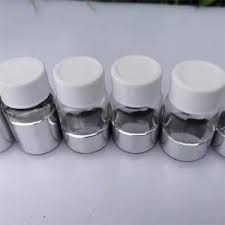
- +86-13363869198
- weimiaohb@126.com

Oct . 18, 2024 06:35 Back to list
High-Quality 95% Curcumin Powder Extract Supplier for Health Supplements
Extracting Curcumin Powder A Focus on 95% Curcumin Manufacturers
Curcumin, the active compound found in turmeric (Curcuma longa), has gained significant attention in recent years due to its potential health benefits. With its anti-inflammatory, antioxidant, and anticancer properties, curcumin is considered a powerful natural supplement. With the increasing demand for high-quality curcumin powder, especially those standardized to 95% curcumin content, manufacturers are now focusing on efficient extraction methods and high-grade production processes.
What is Curcumin?
Curcumin is a polyphenolic compound primarily responsible for the yellow coloration of turmeric. It comprises about 2-9% of turmeric by weight, which means extracting curcumin in concentrated forms requires sophisticated techniques. The therapeutic potential of curcumin has led researchers to explore its role in various health issues, including arthritis, diabetes, cardiovascular diseases, and neurodegenerative disorders. Such extensive studies have spurred the market for curcumin extracts, particularly those containing a high percentage of this active ingredient.
Importance of 95% Standardization
Extracting curcumin in high concentrations, such as 95%, is crucial for both efficacy and consumer appeal. Standardized extracts ensure consistency in the amount of curcumin delivered, which is essential for both research and therapeutic applications. For manufacturers, producing 95% curcumin is not only about meeting market demand; it’s about maintaining quality and ensuring safety in their products.
Extraction Methods
Manufacturers employ various extraction methods to obtain curcumin powder. The most common techniques include
1. Solvent Extraction This method involves using organic solvents like ethanol or methanol to dissolve curcumin from turmeric powder. After filtration, the solvent is evaporated, and curcumin is collected as a concentrated powder.
2. Supercritical Fluid Extraction (SFE) This modern extraction technique utilizes supercritical carbon dioxide (CO2) as a solvent. SFE is known for preserving the integrity of sensitive compounds while achieving high purity levels. This method is cost-effective in the long run, despite being initially expensive.
3. Microwave-Assisted Extraction This method enhances the extraction process by using microwave energy to heat the solvent and turmeric mixture. It results in quicker extraction times and higher yields.
extract powder curcumin 95% manufacturer

4. Ultrasonic-Assisted Extraction This technique utilizes ultrasonic waves to create cavitation bubbles in the liquid medium, which increases penetration and extraction efficiency.
Quality Control and Testing
To ensure the quality of 95% curcumin extracts, manufacturers implement stringent quality control measures. This includes testing raw turmeric for curcumin content and checking for contaminants like heavy metals and pesticides. Advanced techniques such as High-Performance Liquid Chromatography (HPLC) are employed to verify curcumin concentrations in the final product.
The Role of Manufacturers
Manufacturers of curcumin extracts play a critical role in the natural supplement industry. They must navigate complex regulatory environments, ensure compliance with health and safety standards, and respond to market trends. Additionally, they are responsible for educating consumers about the benefits and proper usage of curcumin supplements.
As consumers become more health-conscious and seek natural alternatives, the demand for high-quality, standardized curcumin products continues to rise. Manufacturers who invest in research and development, sustainable sourcing, and eco-friendly practices will benefit from a competitive edge in the marketplace.
Future Perspectives
Looking ahead, the market for curcumin extracts will likely expand as more clinical studies highlight its therapeutic benefits. Innovations in extraction technology, product formulations, and delivery methods, such as nano-curcumin, are anticipated to enhance bioavailability and consumer interest.
The globalization of traditional medicine and increasing inclination towards holistic health solutions will further fuel the growth of manufacturers specializing in 95% curcumin powder. Ultimately, as awareness about curcumin continues to spread, it is essential for producers to prioritize quality, efficacy, and safety in their offerings.
In conclusion, manufacturers of curcumin extract, standardized to 95%, are at the forefront of a growing natural product market. By leveraging advanced extraction methods and focusing on quality assurance, they can meet the diverse needs of health-conscious consumers while contributing to the broader field of natural health solutions.
-
GS-441524 White Liquid Production for Factories | AI-Optimized
NewsAug.02,2025
-
AI-Optimized CAS: 79099-07-3 Factories for High Yield
NewsAug.01,2025
-
Premium CAS 1451-83-8 Factory with GPT-4 Turbo | AI-Optimized
NewsJul.31,2025
-
Pharmaceutical Intermediates - AI-Optimized Synthesis & Purity
NewsJul.31,2025
-
Top CAS: 79099-07-3 Factories & Wholesale Supplier from China
NewsJul.30,2025
-
High-Quality GS-441524 for White Liquid Type Factories & Suppliers
NewsJul.29,2025